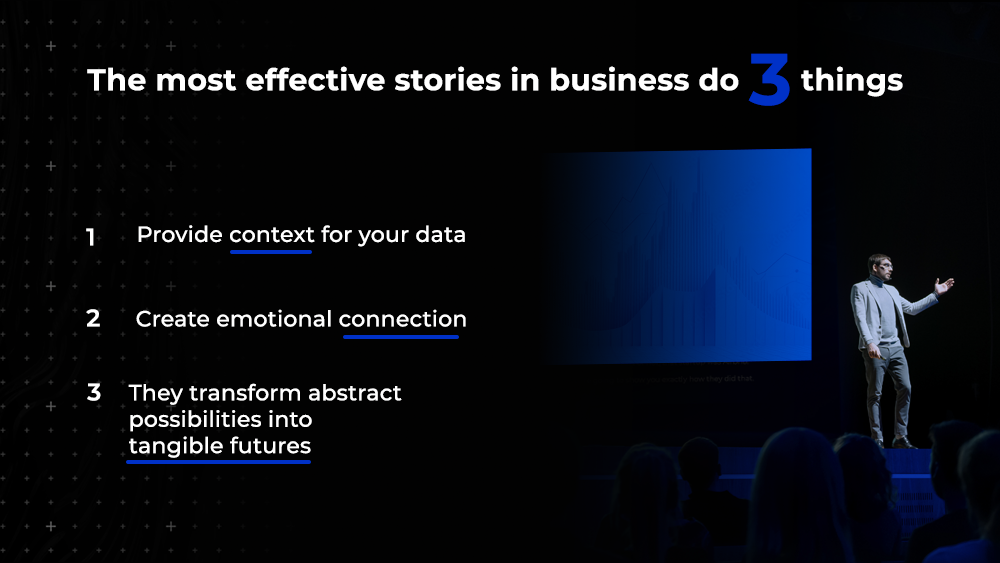Why Facts Need Stories
Why Facts Need Stories

Picture an athlete at mile 25 of a marathon. Their legs are screaming, their lungs burning. The facts—heart rate, lactic acid levels, depleted glycogen stores—all say “stop.” But something else pushes them forward: the story they’re telling themselves.
This is how we all move forward. Not just with facts, but with stories that give those facts meaning. Think about the last time you pushed yourself past what seemed possible. Was it raw data that got you there? Or was it the narrative you created—the vision of who you could become, what you could achieve?
The most powerful stories don’t replace facts; they elevate them. When a runner knows their split times, understands their training data, and has mastered their nutrition—that’s essential. But it’s the story of becoming an elite athlete, of inspiring others, of proving something to themselves that transforms those facts into unstoppable momentum.
This same principle drives success in business, particularly in the startup world. We see it every day with our venture capital clients. A founder might have impressive metrics: market size, growth projections, user acquisition costs. But these numbers alone rarely inspire investment. The magic happens when these facts become part of a larger narrative—a story about how this technology will transform an industry, how this solution will solve a problem that’s plagued customers for years.
At Creative Blue, we don’t just help clients present facts—we help them uncover and articulate the stories that make those facts matter. Consider one of our recent startup clients: they had developed groundbreaking AI technology with impressive technical specifications. But it wasn’t until we helped them tell the story of how their innovation would transform remote healthcare access in rural communities that investors truly engaged. The facts proved it was possible; the story showed why it mattered.
This isn’t about dressing up data or adding superficial flair. It’s about finding the deeper narrative that your facts support. When SpaceX shares rocket specifications, they’re not just listing numbers—they’re telling a story about humanity becoming a multi-planetary species. When Apple reveals processing speeds, they’re telling a story about creativity unleashed.
The most effective stories in business do three things:
- They provide context for your data, showing not just what is, but what could be
- They create emotional connection, helping others see themselves in your vision
- They transform abstract possibilities into tangible futures
Like our marathon runner, success in business requires both the facts—your metrics, your data, your proof points—and the story that drives you forward. The facts tell us what’s possible; the story shows us why it matters.
Too often, “storytelling” in marketing gets reduced to surface-level design tweaks or anecdotal dressing. But real storytelling orients your data. It gives your facts direction, keeps your business on track, and compels action. A strong story doesn’t just decorate your pitch; it drives it.
Too often, “storytelling” in marketing gets reduced to surface-level design tweaks or anecdotal dressing.
So next time you’re preparing a pitch, launching a product, or trying to inspire action, remember: your spreadsheets might prove you can succeed, but it’s your story that will make people want to help you get there. Start with your facts, but don’t stop there. Find the narrative that transforms them from interesting information into an inspiring vision of the future. (still don’t believe us? here’s more to change your mind!)
The finish line is waiting. What’s the story that will get you there?

